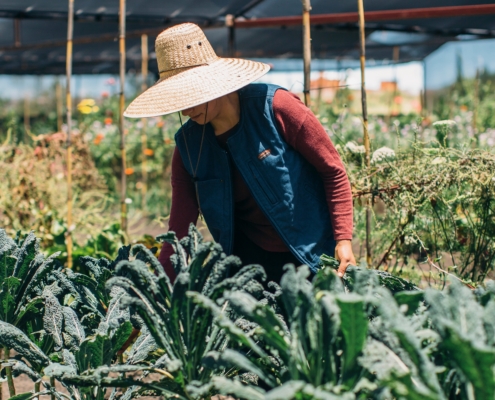 https://regenerationinternational.org/wp-content/uploads/seeds-2.webp
750
1125
paco
https://regenerationinternational.org/wp-content/uploads/2018/10/RI-Logo-New.png
paco2024-06-05 18:41:472024-06-07 18:50:36Local Seeds Are Still Viable-Farmers
https://regenerationinternational.org/wp-content/uploads/seeds-2.webp
750
1125
paco
https://regenerationinternational.org/wp-content/uploads/2018/10/RI-Logo-New.png
paco2024-06-05 18:41:472024-06-07 18:50:36Local Seeds Are Still Viable-Farmers https://regenerationinternational.org/wp-content/uploads/seeds-2.webp
750
1125
paco
https://regenerationinternational.org/wp-content/uploads/2018/10/RI-Logo-New.png
paco2024-06-05 18:41:472024-06-07 18:50:36Local Seeds Are Still Viable-Farmers
https://regenerationinternational.org/wp-content/uploads/seeds-2.webp
750
1125
paco
https://regenerationinternational.org/wp-content/uploads/2018/10/RI-Logo-New.png
paco2024-06-05 18:41:472024-06-07 18:50:36Local Seeds Are Still Viable-Farmers
Land Grabbing Is Not Just Back With a Vengeance. It Is Taking on New Guises Such As Carbon Offsets, Green Hydrogen Schemes, and Other “Green Grabs”.
In recent years, Africa has been at the epicentre of an alarming global trend: the land squeeze. The 2007-8 global financial crisis unleashed a huge wave of land grabbing across Africa and the world. Though the crisis eased, the pressures on farmland never went away. Now 15 years on, global land prices have doubled, land grabbing is back with a vengeance, and farmers are being squeezed from all sides.

Biodiversity is Life – Graphic Novel
The Graphic Novel “Biodiversity is Life” addresses the issue of biodiversity erosion and conservation. The story told in the graphic novel follows a group of young people who, when brought into direct contact with local agricultural ecosystems, learn how biodiversity loss is not a distant problem, but instead has a direct impact on health and food security.

We Need Regenerative Agriculture, But How Can Farmers Fund the Transition?
“It’s always us asking the question of what do we want to do? And then going out and trying desperately to find some money to offset the capital that it takes to run a farm.”

Cutting Forests for Solar Energy ‘misses the Plot’ on Climate Action
As our planet has evolved over billions of years, the chief means of regulating temperature is via the water cycle. Phase transitions of water—from solid to liquid to gas, and back—represent a tremendous transfer of heat. As plants transpire, the moisture moves up through the roots to be emitted as vapor. This is a cooling mechanism, a means of dissipating solar heat.

The U.S.-Mexico Tortilla War
A trade dispute puts a spotlight on food sovereignty, GMOs, a controversial weedkiller, public health, and the fate of Mexico’s iconic white-corn flatbread

Indigenous People and NGO Grow a Wildlife Corridor in the World’s Oldest Rainforest
Indigenous ranger Jason Petersen remembers how he used to watch the world’s oldest rainforest in wonder as a child. When the rains arrived, they would wash the dust from the trees, revealing the lush colors of the forest. Now, as an adult, he says he hopes his son will experience the same awe as he plants a new wildlife corridor on this same land.

We Asked Allan Savory How We Could Locally Reverse Desertification?
Allan Savory highlights that as our understanding of desertification deepens, it becomes evident that dependence on technology and fire only worsens the situation without offering solutions. If neither fire nor technology can effectively tackle the desertification issue, and humans lack alternative tools for environmental management, what alternative approaches could reverse desertification?

Glyphosate Presence in Human Sperm: First Report and Positive Correlation With Oxidative Stress in an Infertile French Population
Environmental exposure to endocrine disruptors, such as pesticides, could contribute to a decline of human fertility. Glyphosate (GLY) is the main component of Glyphosate Based Herbicides (GBHs), which are the most commonly herbicides used in the world.

Quinn Institute to Foster the Evolution of Regenerative Organic Agriculture
The institute is part of Bob Quinns' mission to see more regenerative organic producers and practices in place across the country.

AC Foods Introduces Regenerative Organic Blueberries
Leader in regenerative agriculture, AC Foods, is proud to welcome betterful, a line of Regenerative Organic Certified blueberries, to the market.

Native Prairie Grass Returns to Houston Area After Decades of Urban Development
The wildlife ecologist and botanist, along with his colleague Calan Coleman, are managers for Nash Prairie, a 427-acre coastal prairie about 70 miles southwest of Houston owned by the Nature Conservancy of Texas. The major part of their job is keeping the prairie as diverse and thriving as possible – which means removing invasive species, keeping the woody plants and trees at bay and burning it all down in a prescribed fire when needed.

What Happens After Your Country Runs on 99 Percent Renewable Electricity?
Costa Rica gets more than 99 percent of its electricity from renewables — it’s still not enough.

Growing Greener: Organic Farming Vs. Regenerative Agriculture
Regenerative agriculture represents a paradigm shift in sustainable farming practices. It transcends the limitations of organic certification by prioritizing principles aimed at restoring ecosystems, enhancing soil fertility, and building resilience against environmental challenges. Through techniques such as crop rotation, cover cropping, and holistic land management, regenerative agriculture seeks to regenerate, rather than merely sustain, natural systems.

Black Farmers Are Taking the Lead in Regenerative, Organic Specialty Rice
Apart from the financial benefits of growing organic, regenerative specialty rices for a domestic market, Jubilee Justice consciously reconnects Black smallholder farmers to their rice-growing heritage, both from the pre-civil war South and from their origins in Africa.
All charitable donations are deductible to the full extent allowed by the law.
+1 952-777-3239
© 2019 Regeneration International
